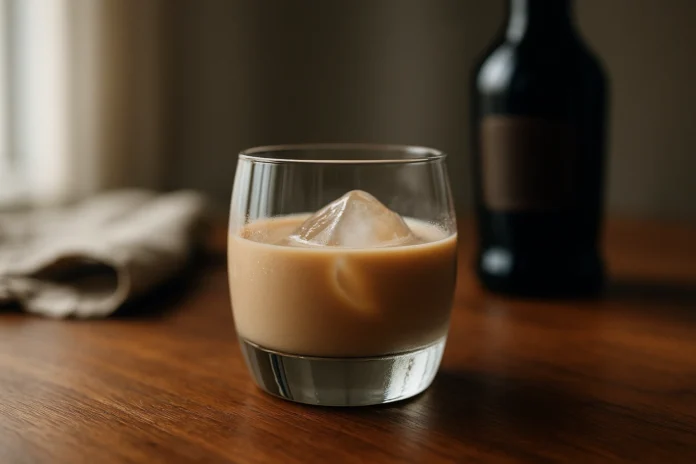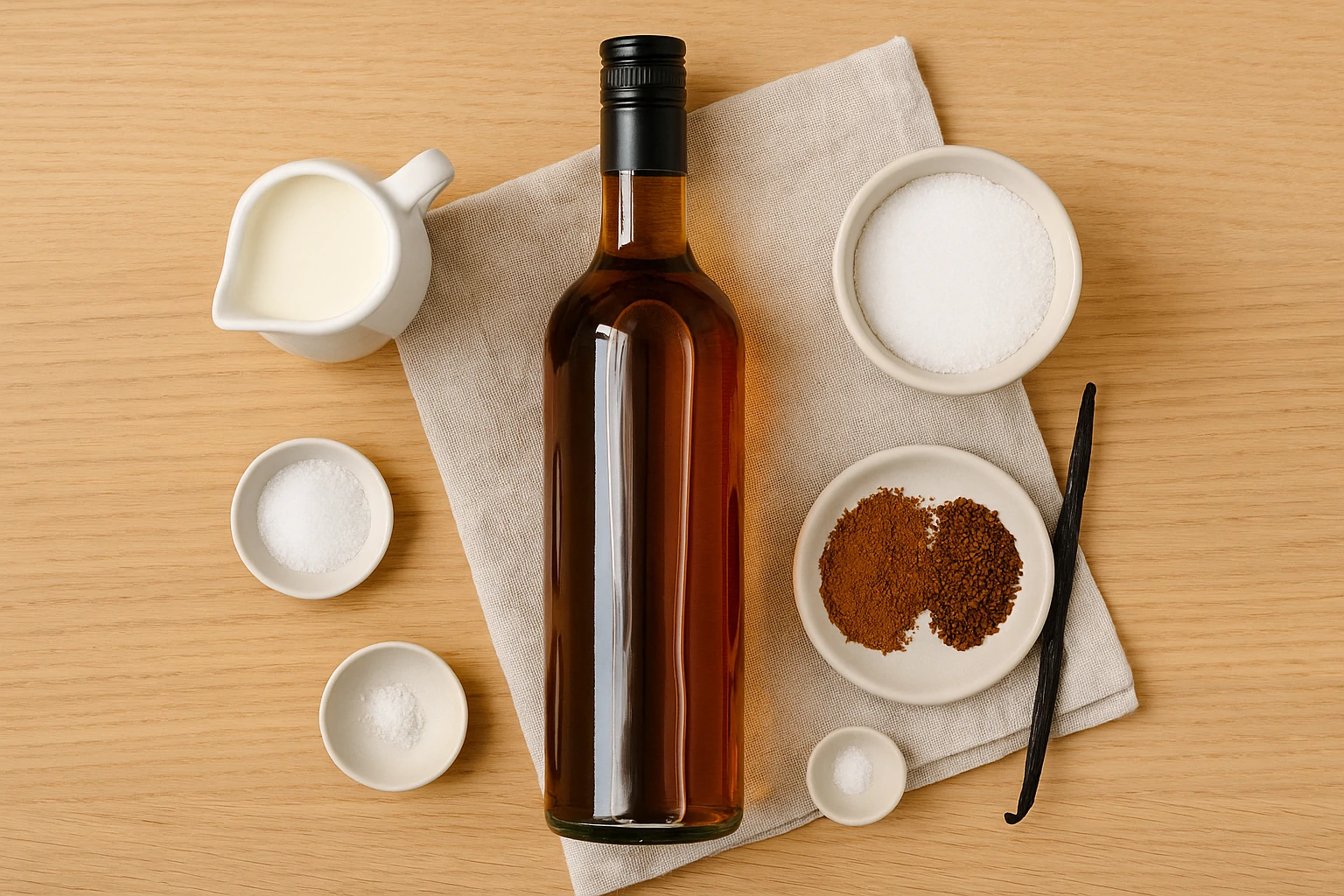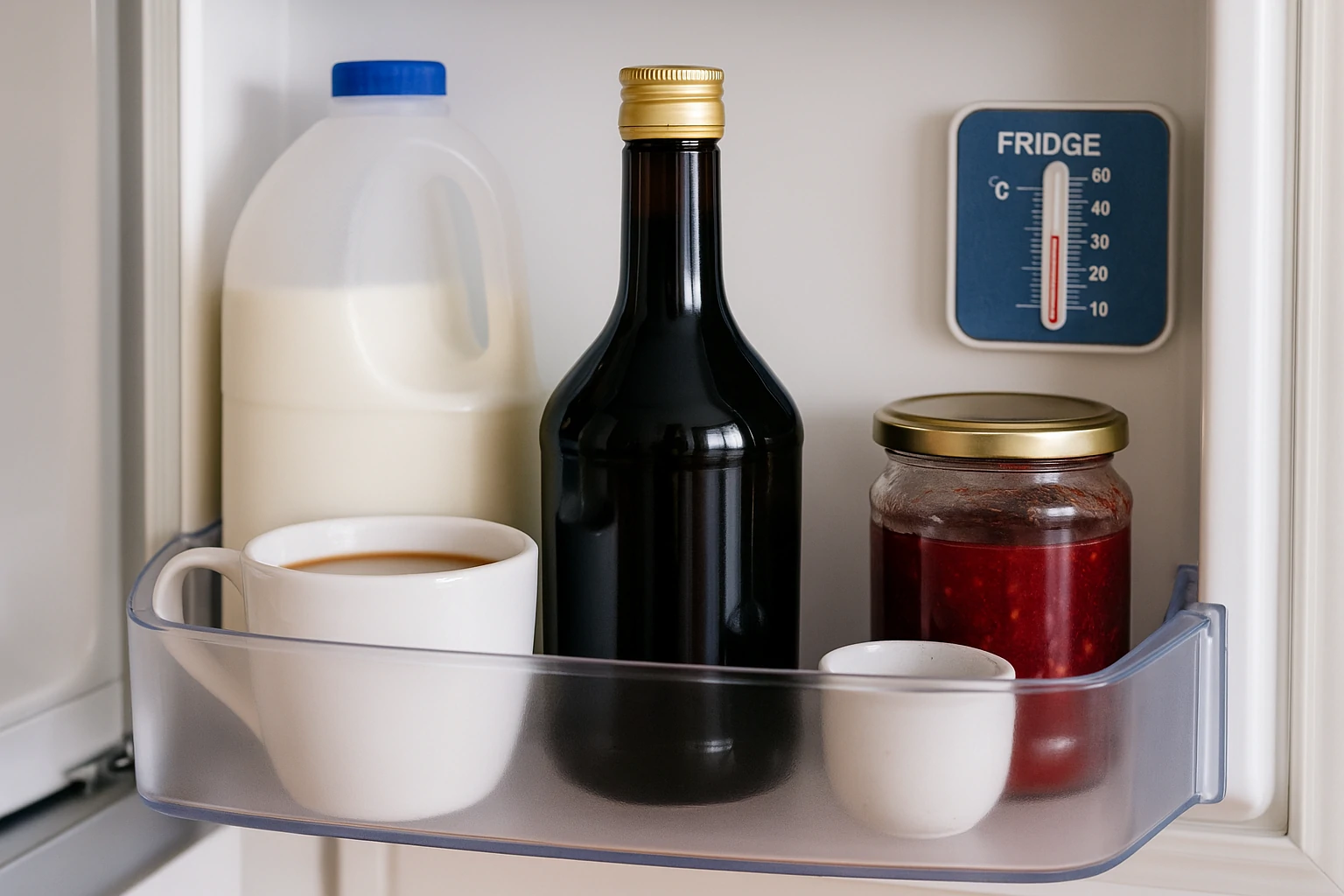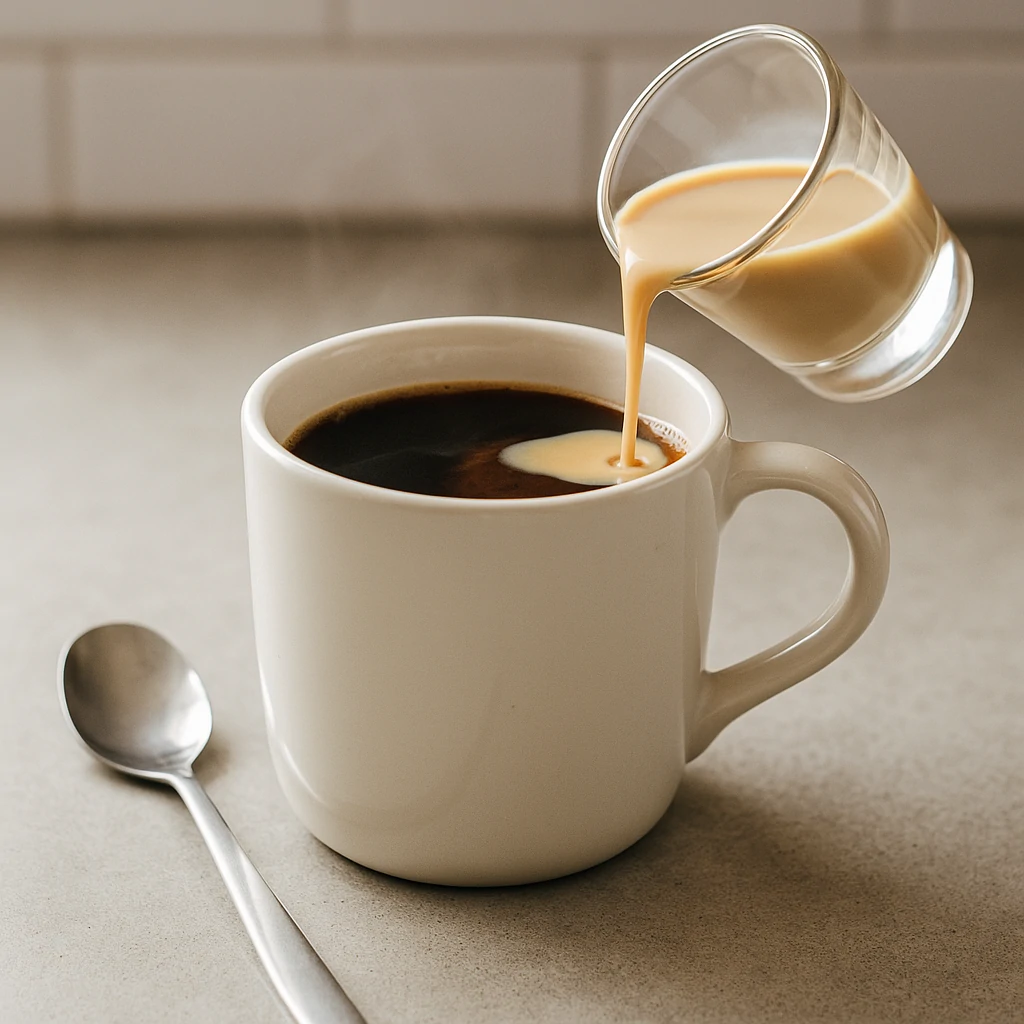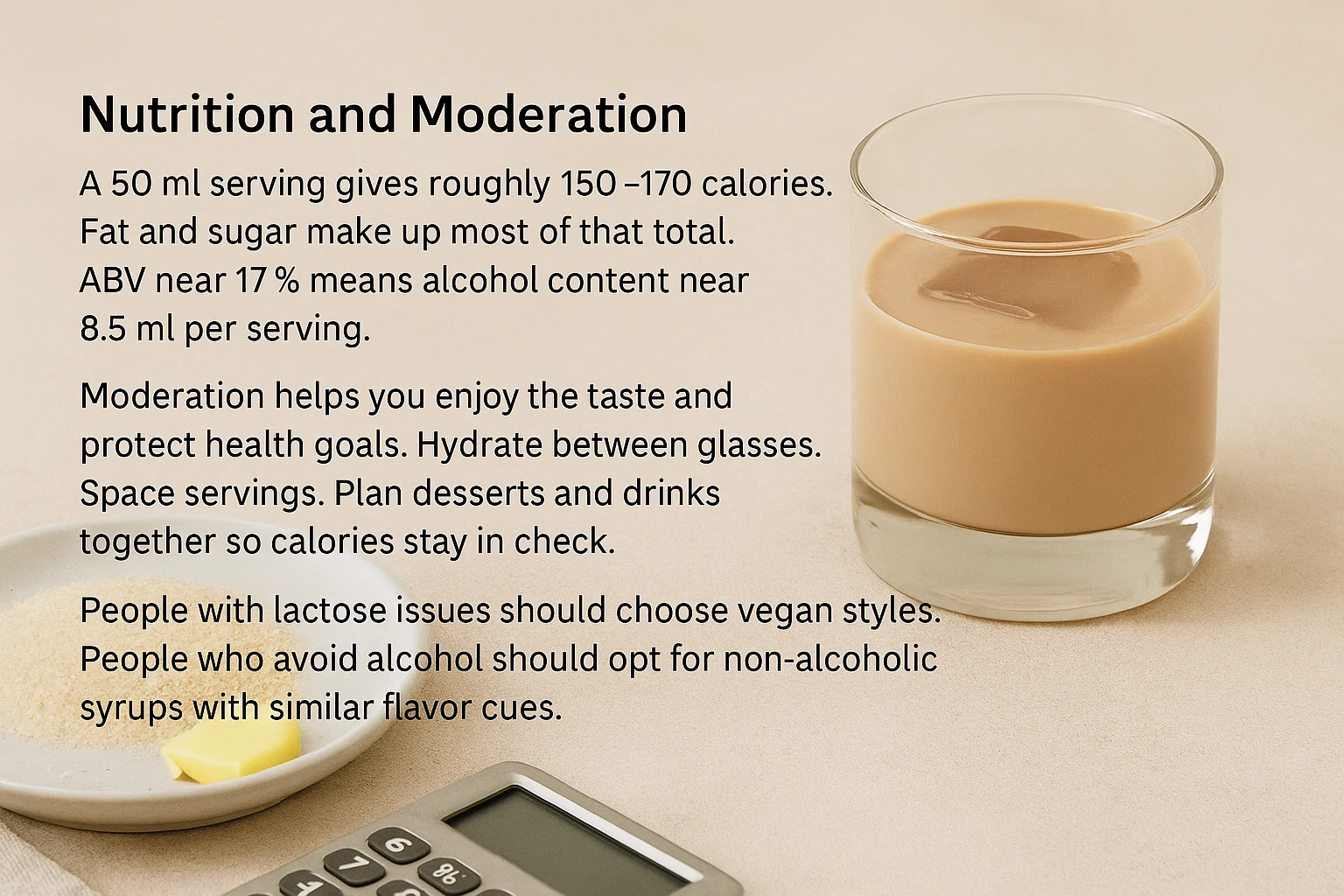Irish cream feels warm, smooth, and friendly. It blends real cream with Irish whiskey and soft flavors.
Many people enjoy it after dinner. Many add it to coffee. Some pour it over dessert. It fits quiet nights and lively parties.
This drink began as a simple idea. Mix cream and whiskey in a stable way. Make it taste rich but not heavy.
The first bottles proved that idea had power. Demand grew fast in many countries. Irish cream now stands as a modern classic.
This guide gives you a full look at Irish cream. You will learn the story, the ingredients, and the methods. You will see how to serve it and how to store it. And you will find home recipes.
You will see vegan paths. You will also get food pairings, bar tips, and holiday ideas. Each section uses clear steps so you can use them right away.
The Origin Story
Irish cream took shape in Dublin in the 1970s. A small team tested cream with whiskey in careful ratios.
Emulsifiers kept the mix stable. Sugar and cocoa rounded the edges. The first major launch came in 1974. Sales spread far beyond Ireland.
The timing helped this rise. People wanted smooth drinks that did not feel harsh. Irish cream met that wish.
It tasted like dessert but still felt adult. Bars and homes adopted it fast. Coffee shops soon followed.
The Irish link also mattered. The drink used Irish dairy and Irish whiskey. That gave it a strong identity.
The mix told a short story in every sip. Cream spoke of fields. Whiskey spoke of casks. The label spoke of place.
Why Irish Cream Took Off Worldwide
Irish cream grew because it felt easy. People wanted a soft drink that did not burn. The mix of cream, cocoa, and whiskey gave that in one glass. The first sip felt smooth. The finish felt calm.
Travel and trade also helped. Duty-free shops placed it in front of new buyers. Airports turned it into a gift idea. A single bottle went home with tourists and sparked word of mouth.
Coffee culture pushed it further. Cafés used it in specials and winter menus. Home cooks followed that trend in kitchens. Irish cream moved from bar shelf to daily life fast.
Core Ingredients
Irish cream uses a short list of parts. Quality in each part makes all the difference.
- Fresh dairy cream
Cream brings body and a soft mouthfeel. Good cream gives a clean finish. Poor cream dulls the drink. - Irish whiskey
Whiskey adds warmth and depth. Age and mash bill affect the notes. A soft whiskey keeps balance. A bold whiskey pushes spice and oak. - Sugar or honey
Sweetness softens alcohol. It ties cream to whiskey. Honey can add florals. Sugar keeps a neutral line. - Natural flavors
Cocoa, coffee, and vanilla appear often. Nut notes add richness. A light pinch of salt can sharpen chocolate tones. - Emulsifier and stabilizer
These keep cream from splitting. Safe food-grade agents hold the structure. The goal is a stable, silky flow in every pour.
Glossary: Simple Terms You Will See
ABV means alcohol by volume. Most Irish cream sits near 17% ABV. That level tastes soft but still feels grown up.
Emulsion means tiny drops of cream held inside the liquid. Stable emulsions look smooth. Broken ones look grainy.
Pasteurization is a short heat step that keeps the drink safe. It does not cook the flavor. It protects shelf life.
How Producers Make It
Producers chill the cream first. Cold cream resists curdle risk. Whiskey goes in slow to protect texture.
Sweetener and flavors follow in measured steps. Large mixers keep shear forces low. Filtration removes any small lumps. Final pasteurization protects shelf life.
The plant checks pH and ABV at each stage. A small drift can cause separation later. Once the liquid passes tests, it goes into clean glass. Caps seal tight and labels go on. Bottles rest in cool storage until shipment.
Craft makers use the same logic at a smaller scale. Fresh local cream plus a house whiskey can yield a special style.
Small runs often show clearer cocoa or coffee notes. Big brands tend to aim for harmony first.
Quality Checks That Signal a Good Bottle
Look at the liquid in the neck. A good bottle looks uniform and clean. You should not see streaks or clumps. Light cream color means fresh tone.
Open the cap and smell. You should notice soft cocoa, light vanilla, and a hint of whiskey. Sour notes signal age or heat damage. A sharp alcohol blast can mean harsh base spirit.
Pour a small taste at fridge temp. The sip should feel smooth at once. Sweetness should not drown the whiskey. Cocoa should not taste dusty. Balance wins every time.
Taste and Mouthfeel
Irish cream tastes sweet, creamy, and warm. The first note is dairy. The mid note is whiskey.
The finish brings cocoa or coffee. Some bottles show vanilla. Some show toffee. A few show light nut tones.
The mouthfeel feels soft and round. The liquid coats the tongue but does not clog it. Ice can thin the body a little and open the nose. Coffee can lift the cocoa and mute the sugar.
Balance makes or breaks the glass. Too much sugar hides nuance. Too much whiskey pushes burn. The best bottles land in the middle. They feel calm but not dull.
ABV, Calories, and Smart Portions
A standard 50 ml pour holds near 150 to 170 calories. Fat and sugar make up most of that total. Alcohol adds more energy but no nutrients.
One small glass after dinner feels right for most adults. A coffee serve needs less. A cocktail can reach two small serves if other sweets enter the mix.
Plan the night with that in mind. Pair one dessert with one pour. Drink water between rounds. You keep taste high and waste low.
Notable Brands and What Sets Them Apart
Baileys
The first major brand. Smooth cocoa, light vanilla, clean whiskey warmth. Many flavored lines. Reliable texture.
Carolans
Honey lends a gentle roundness. The finish reads warm and soft. Easy to sip neat or on ice.
Saint Brendan’s
Fresh cream tone stands out. The whiskey note stays mild. Good value bottle for guests or baking.
Kerrygold
Grass-fed dairy cues define the profile. Cocoa and whiskey stay clear but not harsh. A “fresh cream” character drives the appeal.
Regional and craft labels also earn loyal fans. Farm sources, single-malt bases, or small-batch methods can yield unique spins.
Match Brands to Uses
A cocoa-heavy bottle suits desserts and milkshakes. It blends into brownies, mousses, and glazes. The chocolate note stands up under heat.
A cream-forward bottle suits coffee and neat pours. It melts into hot cups fast. It holds shape over ice and keeps a clean finish.
A whiskey-led bottle suits cocktails. It stays clear next to vodka or coffee liqueur. It brings spine to a White Russian or a Mudslide.
Serving Basics
Temperature
Chill the bottle after opening. Serve between 6–10 °C. Cold keeps the body silky and the nose tidy.
Glassware
Use a rocks glass or a small stem glass. Ice cubes should be clear and solid. Tiny cubes melt fast and thin the drink.
Pour Size
A 50 ml pour works well for neat service. A 25–35 ml pour works in coffee. Cocktails often use 25–45 ml per drink.
Do Not Shake Hard
Hard shakes can whip the cream and create foam or micro-curdles. A short, gentle stir does the job.
Common Serving Mistakes to Avoid
Do not use crushed ice. Small shards melt fast and thin the glass. Large clear cubes keep chill and texture.
Do not shake hard. Heavy shakes whip the cream and raise foam. The mouthfeel then turns rough. A slow stir protects the emulsion.
Do not pour into very hot cups at once. Scalding heat can shock the cream. Add a little first. Let the liquid settle. Then top up the rest.
Coffee Pairing Guide
Hot coffee
Medium-roast coffee fits best. Dark roasts can hide nuance. Add Irish cream in place of sugar and milk. Stir once. Taste and adjust.
Iced coffee
Brew strong. Chill fully. Add Irish cream right before service. Ice plus dairy can thin the body. A strong base keeps flavor clear.
Espresso
A single shot over 25–30 seconds holds enough body. A small float of Irish cream on top gives a layered sip with sweet relief after the crema.
Mocha twist
Cocoa powder on the foam lifts chocolate notes. A pinch of sea salt can sharpen the mid-palate.
Non-Alcoholic Coffee Options with the Same Mood
Some readers want the flavor but not the alcohol. A simple syrup with cocoa, coffee, and vanilla can help. Add a spoon to hot coffee and top with whipped cream.
A dairy base also works. Mix warm milk with a little cocoa, brown sugar, and espresso. Add vanilla and a micro pinch of salt. The cup feels cozy and rich.
Plant milk can reach a similar feel. Oat milk makes a round body. Almond milk adds a light nut lift. Heat slowly and stir once to keep it smooth.
Cocktail Playbook
Mudslide (rocks)
• 30 ml Irish cream
• 30 ml coffee liqueur
• 30 ml vodka
• Ice, short stir, rocks glass
Sweet, creamy, and firm enough to count as a dessert drink.
B-52 (layered shot)
• 20 ml coffee liqueur
• 20 ml Irish cream
• 20 ml orange liqueur
Pour over a spoon to keep bands clean. Sip slow to blend in mouth.
Nutty Irishman
• 40 ml Irish cream
• 20 ml hazelnut liqueur
• Ice, rocks glass
Dessert in two pours. Add espresso to turn it into a nightcap.
Irish Cream White Russian
• 30 ml vodka
• 30 ml coffee liqueur
• 30 ml Irish cream
• Ice, slow build
A smoother spin on the classic. Less burn, more silk.
Signature House Cocktail Template
Pick a base spirit that feels clean. Vodka keeps the focus on cream. Irish whiskey doubles the origin cue. Start with 30 ml spirit.
Add 30–40 ml Irish cream as the core. Add a dry helper to fix sweetness. A dash of bitters or a short espresso shot works well. Stir with ice.
Strain into a cold glass. Shave dark chocolate on top. Name the drink after your city or café. The build stays simple and repeatable.
Dessert and Baking Ideas
No-churn ice cream
Whip cold cream to soft peaks. Fold sweetened condensed milk. Add Irish cream and cocoa. Freeze. Serve with shaved chocolate. The alcohol keeps crystals small and the scoop soft.
Cheesecake glaze
Simmer Irish cream with a little sugar until it coats a spoon. Cool to warm. Pour over a cold cheesecake. The sheen looks great and the taste feels balanced.
Brownie upgrade
Replace a third of the water with Irish cream. Add a small pinch of espresso powder. Rich cocoa notes rise and the crumb stays moist.
Bread pudding sauce
Heat Irish cream with butter and a touch of vanilla. Spoon over warm pudding. The dairy links to the custard and lifts the finish.
Heat and Bake Safety Notes
Keep oven temps and stovetops gentle. High heat can split dairy. Low and slow protects texture and taste.
Add the liqueur near the end in sauces. A short simmer ties flavors together. A long boil can mute the nose and thin the finish.
Test a small batch first. Taste and adjust sugar. Cocoa and cream already add sweetness. Extra sugar can push desserts past balance.
Food Pairings
Chocolate desserts
Dark chocolate locks with whiskey notes. Milk chocolate leans into the cream. A sea-salt flake sets a crisp contrast.
Fruit
Strawberries and bananas work well. Pears add a clean lift. Citrus can clash unless sugar levels stay low.
Cheese
Brie, mascarpone, and triple-cream styles echo the drink’s body. Keep portions small to avoid palate fatigue.
Savory snacks
Salted nuts and light crackers reset the palate between sips. Smoked items can overshadow the glass.
Allergens and Dietary Notes
Irish cream contains dairy. It also can contain traces of nuts through flavor lines. Labels vary across brands. Always read them.
Lactose-free readers should use vegan paths. Oat cream gives a dairy-like body. Coconut cream adds a mild tropical note. Both take cocoa well.
Gluten concern stays low in most bottles. Some plants still share lines with grain products. People with strict needs should confirm with the brand.
Storage and Shelf Life
Unopened bottles can last up to two years at room temp. Keep them cool and out of sun. Once opened, move the bottle to the fridge. Cap tight after each pour. A six-month window suits most labels after the first open.
Check before service. A sour smell or grainy texture means spoilage. Do not try to fix it with shaking. Discard it. Quality habits save money and protect taste.
Never freeze Irish cream. Ice crystals break the emulsion. The liquid will not return to a true silky state.
Shelf-Life Quick Checks at a Glance
Look at color. Fresh bottles show a light, even tone. Dark streaks can hint at age or heat.
Move the glass. The liquid should flow like light cream. Grit or clumps mean spoilage. Do not strain and save. Discard it.
Smell the rim. A sour note or sharp acid cue means the end. A clean cocoa and soft vanilla nose means safe.
Buying Guide
Read the label
Look for “Irish whiskey” and “cream” as clear parts. A vague “spirit” or “flavor” line often signals a thin profile.
Check ABV
Most bottles sit near 17 % ABV. Much lower ABV can taste flabby. Much higher ABV can push burn.
Start small
Test with a 375 ml bottle before you stock up. Taste neat, on ice, and in coffee. Choose the one that stays balanced in each use.
Match to use
Desserts like a cocoa-forward style. Coffee likes a cleaner cream tone. Neat service likes a whiskey-led spine.
Budget vs Premium: What Changes
Budget lines use simpler whiskey blends. The profile leans sweet and gentle. They work well in coffee and bakes.
Premium lines use richer cocoa and better cream. The whiskey note shows more oak and spice. They shine neat or on large ice.
Pick the tier based on the job. Cocktails hide nuance. Desserts mute detail. Neat pours expose both flaws and strengths.
Home Recipe: Classic Style
Ingredients
• 1 cup Irish whiskey
• 1 cup heavy cream (cold)
• 1 can sweetened condensed milk (14 oz)
• 2 tbsp chocolate syrup
• 1 tsp instant coffee
• 1 tsp vanilla extract
• Pinch of fine salt
Method
Add all parts to a blender. Pulse three to four short bursts on low. Stop once the mix turns uniform. Do not whip hard. Taste. Adjust cocoa or coffee a touch if needed. Bottle, cap, and chill. Shake gently before each pour. Use within two months.
Notes
A darker syrup adds depth. A light honey can replace part of the sugar and add a soft floral line.
Make-Ahead Gift Bottles at Home
Wash and dry glass bottles fully. Any water drops can weaken the mix. A tight cap keeps air out and flavor in.
Add a date tag and a “keep cold” note. Most home batches stay fresh for two months. Vegan batches fade sooner.
Include a small recipe card. Add one coffee serve, one cocktail, and one dessert idea. Gifts that teach often get used fast.
Home Recipe: Vegan Style
Ingredients
• 1 cup Irish-style whiskey or a grain spirit you trust
• 1 cup full-fat oat cream or canned coconut cream
• ½ cup maple syrup
• 2 tbsp cocoa powder, sifted
• 1 tsp espresso powder
• 1 tsp vanilla extract
• Pinch of salt
Method
Whisk dry parts with a small splash of warm water to form a smooth paste. Add plant cream and whisk until glossy. Add whiskey and maple syrup. Bottle and chill. Shake before use. Aim to finish within three weeks.
Profile
Oat gives a dairy-like mouthfeel. Coconut gives a tropical hint. Choose the base that suits your menu.
Nutrition and Moderation
A 50 ml serving gives roughly 150–170 calories. Fat and sugar make up most of that total. ABV near 17 % means alcohol content near 8.5 ml per serving.
Moderation helps you enjoy the taste and protect health goals. Hydrate between glasses. Space servings. Plan desserts and drinks together so calories stay in check.
People with lactose issues should choose vegan styles. People who avoid alcohol should opt for non-alcoholic syrups with similar flavor cues.
Design a Tasting Flight
Pick three styles: cream-led, cocoa-led, whiskey-led. Pour 15 ml of each. Start with cream-led, then cocoa, then whiskey.
Taste neat at fridge temp. Add a cube to each glass. Taste again. Note how ice opens or softens the mix.
End with a spoon of medium-roast coffee in each glass. The best bottle should hold shape across all three rounds.
Holiday and Event Ideas
Winter coffee bar
Set out hot coffee, Irish cream, cocoa powder, and shaved chocolate. Guests can build custom cups. A cinnamon stick adds aroma without more sugar.
St. Patrick’s Day board
Add small glasses of Irish cream to a board with shortbread, chocolate truffles, and strawberries. Keep pours small so flavors stay bright.
Gift set
Pair a half-bottle with two rocks glasses and a card of simple recipes. Add a jar of coffee beans to round out the theme.
Brunch touch
A light drizzle over French toast or pancakes turns a simple plate into a treat. Keep the drizzle small so the dish does not turn too sweet.
Bar and Café Tips
Batch policy
Do not batch Irish cream with coffee all day. Dairy can break down. Build to order. The cup will taste better and stay safe.
Ice choice
Use clear large cubes. That slows melt and keeps the body intact. Crushed ice can thin the drink too fast.
Clean tools
Rinse jiggers and spoons between cocoa-based rounds and citrus rounds. Residual acid can dull the cream.
Menu cues
Use short names and clear notes. Guests want signals like “silky cocoa finish” or “soft vanilla nose.”
Staff Training Notes (If You Run a Menu)
Teach staff a 10-second check: look, smell, taste. A quick pass saves a shift. A bad bottle hurts trust fast.
Standardize your pour. Use one jigger and one cube size. Guests get the same glass each visit. That builds loyalty.
Rotate open bottles. Use date dots on caps. First open, first out. Waste goes down and quality stays up.
Troubleshooting Guide
Curdle in coffee
Cause: high acidity or very hot coffee.
Fix: brew slightly cooler; add Irish cream first; pour coffee over it; stir once.
Too sweet in cocktails
Cause: large cream ratio next to sweet liqueurs.
Fix: add vodka or whiskey to dry the mix; add a dash of bitters.
Flat flavor
Cause: old bottle or warm storage.
Fix: store cold after open; buy smaller bottles; add a fresh cocoa pinch in desserts.
Separation in the bottle
Cause: heat or age.
Fix: gentle roll can help a fresh bottle; spoilage signs mean discard.
Common Myths
“It keeps forever.”
Not true. The emulsion breaks over time. Freshness still matters.
“Any whiskey will do.”
A harsh whiskey can dominate. A soft Irish base keeps balance.
“Coffee must be dark roast.”
Medium roast gives more room to taste the cream and cocoa.
“Ice ruins the drink.”
Good ice improves texture and aroma. Poor ice waters the pour.
Compare with Similar Cream Liqueurs
Chocolate cream liqueurs push cocoa and skip whiskey depth. They taste lush but flatter. They suit cakes more than neat pours.
Coffee cream liqueurs lean on roast and caramel. They punch harder in espresso drinks. They can crowd desserts with extra sugar.
Irish cream sits in the middle. It keeps dairy first, cocoa second, whiskey third. That stack gives range across cups, cakes, and cocktails.
Taste Training at Home
Set up a small flight. Pour three brands in equal pours. Smell first. Note cocoa, coffee, vanilla, and whiskey. Taste in slow sips. Add a cube to each glass. Taste again. Add a spoon to a hot coffee cup. Taste a third time. The best bottle should stay balanced across all three tests.
Write short notes. Use simple terms like “soft,” “nutty,” “cocoa,” “oak,” “sweet,” “clean.” A two-line note helps you remember the one you liked best and why.
Responsible Enjoyment
Plan the night. Set limits before you start. Eat a small meal. Drink water. Share the bottle with friends. Call a ride if you need one. Good habits protect you and your guests.
Non-Alcohol Versions That Still Feel Special
Use a malted milk base with cocoa and vanilla. Add espresso for bite. The cup reads warm and deep without alcohol.
Build a cold version with oat milk, cocoa, maple, and espresso. Blend once and chill. Serve over ice with shaved chocolate.
Top either cup with fresh cream or plant whip. A small pinch of salt makes the sweet parts feel bright.
Quick Reference Recipes
Irish Cream Mocha
• 150 ml hot coffee
• 25–35 ml Irish cream
• 1 tsp cocoa powder
Stir and serve. Add whipped cream if you like.
Affogato Twist
• 1 scoop vanilla gelato
• 25 ml Irish cream
• 1 shot espresso
Scoop, pour, and serve at once.
Irish Cream Hot Chocolate
• 180 ml hot milk
• 1 tbsp cocoa + 1 tsp sugar
• 30 ml Irish cream
Whisk cocoa and sugar with a splash of hot milk. Add the rest. Stir in Irish cream.
Sustainable Choices
Choose brands that support local farms. Grass-fed dairy often means lower footprint per liter. Recycle glass. Use metal straws and real glassware at home. These simple habits cut waste without cutting joy.
Waste-Wise Kitchen Uses
Leftover Irish cream lifts stale bread into pudding. It turns day-old brownies into truffles. It saves small scraps without loss of joy.
Use near-empty bottles in sauces. A splash in a pan adds gloss to a glaze. The last drops still hold flavor.
Keep labels and bottles for crafts. Clear glass makes nice spice jars. Good habits reduce waste and add charm.
Common Questions
Is Irish cream the same as whiskey cream?
Most labels use “Irish cream,” but “whiskey cream” can appear in some markets. The core idea stays the same: cream plus Irish whiskey plus flavor. Read the label to confirm real Irish whiskey and real cream.
Can I add Irish cream to tea?
Yes, but choose black teas with body. Assam or breakfast blends work best. Add a small pour at the end. Citrus teas can curdle dairy, so test a spoon first.
How long does a homemade batch last?
Classic dairy versions last up to two months in the fridge if the bottle stays cold and capped. Vegan batches fade faster and taste best within three weeks.
What coffee roast works best?
Medium roast shows more detail. Dark roast can hide cocoa and vanilla. If you love dark roast, add a pinch of sea salt to sharpen the mid palate.
Why did my coffee curdle?
Very hot or very acidic coffee can shock the cream. Add Irish cream first, then pour coffee over it. Stir once. Cooler brew temps also help.
Does Irish cream contain gluten?
Most bottles test gluten-free, but shared lines can exist. Readers with strict needs should check with the brand and read the allergen panel.
Can I freeze Irish cream desserts?
Cakes and brownies freeze well. Sauces and glazes can split after a thaw. Freeze test a small portion first to check texture.
What ABV should I expect?
About 17% in most bottles. Much lower can taste flat. Much higher can push burn and fight the cream.
Conclusion
Irish cream stands at a rare crossroads. It feels rich yet easy. And it tastes sweet yet grown-up. It links Irish fields and casks in one calm sip.
The story began with a bold idea and careful craft. The story now lives in homes, cafés, and bars across the world.
You now hold the full map. And you know the parts, the methods, and the signs of quality. You know how to serve it and how to store it.
You can make a classic version at home. And you can make a vegan path as well. You can pair it with cake, fruit, or cheese. You can build cocktails and coffee cups that shine.
Enjoy it with care. Share it with friends. Keep the bottle cold and the pours small. Let each glass carry a little Irish warmth into your day. That simple habit turns a sweet liqueur into a small ritual of comfort and grace.
Read Next Post: Candizi Sweet Facts: Taste, Wellness, and Viral Appeal in One Brand

